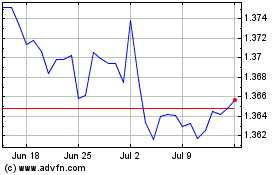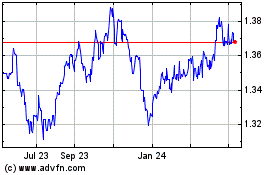Canadian Dollar Falls On Disappointing GDP Data
March 01 2019 - 4:45AM
RTTF2
The Canadian dollar dropped against its major counterparts in
the European session on Friday, as the Canadian economy grew at a
much slower pace than forecast in the fourth quarter of 2018.
Data from Statistics Canada showed that the economy grew at an
annualised pace of 0.4 percent in the fourth quarter, after rising
2.0 percent in the previous quarter. Economists had forecast a 1.2
percent growth.
On a month-on-month basis, the GDP dropped 0.1 percent, the same
rate as in November. Economists had expected the growth to be
stagnant.
The currency was further weighed by falling oil prices, led by
surging U.S. supply and worries over a global economic
slowdown.
Crude for April delivery fell $0.15 to $57.07 per barrel.
China manufacturing sector contracted for the third straight
month in February, survey data from IHS Markit showed.
The Caixin China Manufacturing Purchasing Managers' Index came
in at 49.9 in February versus 48.3 in January.
The loonie has been trading higher against its major
counterparts in the Asian session.
The loonie fell to a weekly low of 1.3241 against the greenback
and a 3-week low of 1.5069 against the euro, from its early 2-day
high of 1.3130 and a 4-day high of 1.4920, respectively. The next
possible support for the loonie is seen around 1.35 against the
greenback and 1.50 against the euro.
The loonie dropped to 0.9405 against the aussie and 84.47
against the yen, off its early high of 0.9316 and near a 3-month
high of 85.24, respectively. If the loonie falls further, 0.95 and
82.5 are likely seen as its next support levels against the aussie
and the yen, respectively.
Looking ahead, U.S. ISM manufacturing index for February and
University of Michigan's final consumer sentiment index for
February are due shortly.
US Dollar vs CAD (FX:USDCAD)
Forex Chart
From Mar 2024 to Apr 2024

US Dollar vs CAD (FX:USDCAD)
Forex Chart
From Apr 2023 to Apr 2024
